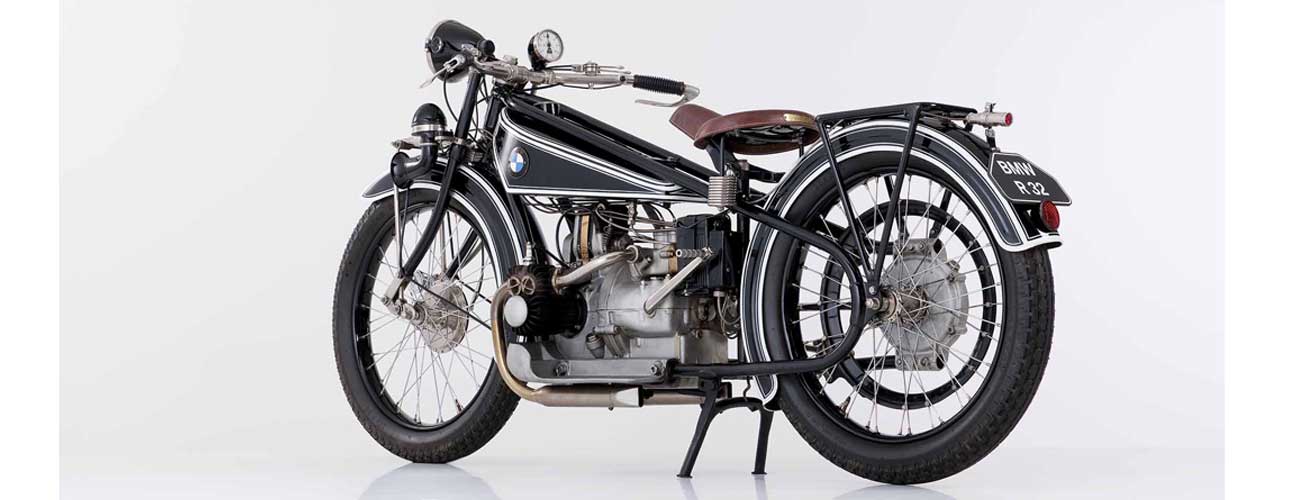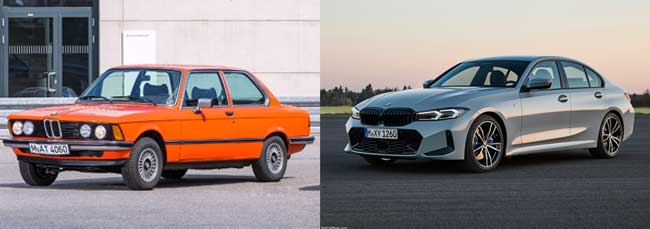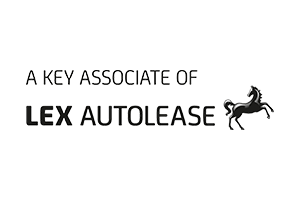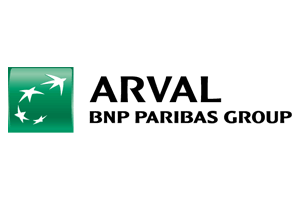
First Image Sourced: https://www.bmw.com/en/automotive-life/BMW-name-meaning-and-history.html#:~:text=BMW%20was%20created%20in%201917,therefore%20considered%20BMW’s%20founding%20year.
The Formation of BMW
The origins of BMW can be traced back to 1916 when at the government’s behest Karl Rapp and Gustav Otto merged the bankrupt Flugmaschinenfabrik Gustav Otto company into Bayerische Flugzeug-Wekre AG (BFW).
In the following year, the Rapp Motorenwerke company became the Bayerische Motoren Werke GmbH, which was converted into an AG (public company) in 1918. Rapp Motorenworke GmbH produced engines for aircraft and throughout the First World War supplied the German air force with engines. After the war, the company found that there wasn’t a lot of demand for aircraft engines and so they shifted focus to railway brakes and built-in motors. They saw such success with their railway brakes that the Berlin-based Knorr-Bremse AG took majority ownership of BMW in 1920. With their majority share BMW was incorporated into Knorr-Bremse and the BMW name disappeared temporarily as the focus was on railways.
However, it wasn’t gone for long as in 1922 the BMW name was purchased by Knorr-Bremse main shareholder Camillo Castiglioni, who took the BMW name, logo engine construction operations and employees and facilities and transferred them to BFW. In the same year, the BFW moved their base and formally changed its name to Bayerische Motoren Werke AG becoming BMW.
The BMW Logo
The iconic BMW logo was first seen in 1917 and has remained on all of their products since then. It has gone through several iterations, but the changes have only been minor and it has essentially remained the same circular design with the colours of the Bavarian state and BMW initials.

BMW Motorcycles
BMW’s first venture into the motor vehicle industry was with a motorcycle. They introduced their BMW R 32 at the 1923 Berlin Motor Show and it was an instant success thanks to the vehicle’s high build quality and the positioning of all parts needing repair along the drive shaft for easier servicing. The Boxer engine also had cylinders mounted transverse to the direction of motion and this remains a feature of BMW bikes to this day.
It was a motorcycle that was their first post-WW2 vehicle as well, with the R 24 being introduced in 1948. It was an enhanced version of the pre-war R 23 model and was just as successful, despite the delay to its launch due to material and machinery delays.

Image Sourced: https://www.bmwgroup-classic.com/en/history/classic-heart/classic-heart-pool/classic-heart/BMW-R32.html
BMW Begins Producing Cars
It was in 1928 with the purchase of another company, Fahrzeugfabrik Eisenach, that BMW was able to produce cars. Their first car was produced under licence from the Austin Motor Company in 1929 but they were soon using their own designs.
BMW Through the Wars
As we mentioned previously the BMW company wasn’t in its current recognisable form until 1922, but before then the companies that formed it were involved in the first world war, however, this was in the production of airplane engines and other products.
Prior to the Second World War but during the era of National Socialism, BMW continued to produce motorcycles and automobiles but there was a shift towards them becoming an armament firm. This helped establish them as one of the most important businesses for the German economy during the war.
During WW2 the company continued to grow and they were not against using forced labour and prisoners in concentration camps in order to meet the targets set to them by the authorities. These people had to work in terrible conditions and were often overworked and underfed leading to many dying of hunger and starvation, which BMW acknowledges and has participated in compensation payments and commissioned two academic dissertations that investigated this part of their history.
Due to the high demand for output, the war was a time of growth for the manufacturer, with more factories being built and the different elements of the company, aero-engines and armament and motorcycles and cars, were separated into different sub-companies.
Post-War BMW
After the war allied soldiers requisitioned and occupied the BMW plants as they were classified as an armament company. The company lost total control of their business assets and this lasted until 1949 in most plants and until 1955 in Allach.
The Munich and Allach plants were dismantled and plant machinery and tools across all of their sites were dismantled and redistributed around the world as repatriations.
From 1945 onwards stopgap production was started in Milbertshofen and Berlin and this was mainly the production of household appliances.
It wasn’t until 1948 that the first post-war BMW model appeared with the R 24 motorcycle. And it was three more years before their next car arrived. The 501 was a large saloon with an enhanced version of the six-cylinder engine that was featured in the BMW 326, and it was carrying six people. While it didn’t achieve the same commercial success as their previous models had it did re-establish the brand’s status as a manufacturer of high-quality, technologically advanced and exciting cars. Ten years later, in 1961, BMW presented the car that really established them on an international platform in the post-war decades. The 1500 was a compact and sporty four-door middle-class saloon that was quickly a very popular model.
Following the success of the 1500 BMW continued to produce popular models and by the mid-1960s they reached the limit of capacity at the Munich plant. To solve this and continue the business’ journey in 1967 they purchased a struggling automotive company Hans Glas GmbH and used its plant locations in Dingolfing and Landshut which went on to be some of the largest plants for the company.
During the 1970s BMW continued to expand, establishing its first international plant in South Africa in 1972. They also began to set up separate subsidiary companies in the countries it was selling models with France being the first in 1973 to have its own BMW sales company.
As well as being the decade for international expansion the 70s saw BME establish BMW Kredit GmbH as a subsidiary company which provided finances for their own transactions and for the dealerships. This was the start of BMW’s own finance and leasing business, which remains a core component of BMW to this day.
BMW Racing
In 1972 BMW brought together its various motorsports ventures under one new subsidiary company – BMW Motorsport GmbH, which later became known as BMW M GmbH.
Over the years BMW has seen great racing success in many races including the Nürburgring 24-hour Race, Formula One, Formula Two, Formula E, Le Mans and Rally Racing.

Image Sourced: https://www.bmwgroup.com/en/company/history.html
BMW M GbhM has not only seen its own success on the track but its design teams have supported BMW in creating some of their higher performance and sportier-looking road models as well.
Innovation and Forward Thinking in BMW
It was in 1985 that BMW Technik GmbH was established. It was a think-tank division that was completely separate from the constraint of their regular product series and development patterns, with some of the company’s best designers, engineers and technicians working there to develop ideas and concepts for the BMWs of tomorrow.
One of the first major projects to come from BMW Technik was the Z1 Roadster in 1988.
A few years later in 1990, BMW AG brought together all research and development (R&D) under one roof in their FIZ (research and innovation centre) in Munich. They were the first automotive company to house all of its R&D teams in one centre with around 7,000 scientists, engineers, designers, managers and technicians working together in an integrated team.
Today over 9,000 people work across the expanded facilities and are creating innovative breakthroughs for future BMWs.
BMW Herbert Quandt Foundation
BMW has not just focused on producing popular cars and motorcycles but is also committed to improving the world around it.
In 1970 they founded the Herbert Quandt Foundation in honour of their major shareholder’s 60th birthday. The foundation is today an independent and non-profit corporate foundation which is dedicated to helping global leaders work towards a peaceful, just and sustainable future for us all.
The foundation has a number of different programs and initiatives that it has created and supports around the globe.
Growing the BMW Group
In early 1994 BMW purchased the Rover Group in the UK which included established brands like Land Rover, Rover, MG, Triumph and MINI. Despite wanting to fully integrate the Rover Group into the BMW Group they ended up selling the group in 2000 but retained the MINI brand. To this day MINI remains part of the BMW Group.
In 1998 BMW acquired another legend in the industry after long negotiations they got the brand and naming rights for Rolls-Royce motor cars. To this day the Rolls Royce brand remains part of the BMW Group.
Following the acquisition of the brands the BMW Group realigned their strategy in 2000 with the aim of revitalising their new brands and expanding their stronghold with a focus solely on the premium car segment across the international market for all three of the remaining brands; BMW, MINI and Rolls Royce.
Evolution of BMW Cars
BMW 501
The 501 was BMW’s first model when the company was regaining independence after WW2 and the company being controlled by allied forces. It was a large saloon car with room for six adults to fit comfortably.
Under the hood was an enhanced version of the six-cylinder engine that featured in their popular pre-war model the 326.


BMW 1500
In 1961 BMW introduced the 1500. This was the car that really re-established them on the international market following the damage their reputation sustained during and post-WW2.
It was a compact and sporty four-door saloon aimed at the middle of the market and it rapidly became popular with drivers around the world thanks to its stylish design, powerful and sporty performance and affordable pricing.
BMW 3 Series
The 3 Series first appeared in nearly 45 years ago in the 1970s. It was famous for its distinctive profile, which had a raised tail section and crease line on the body.
Initial models were a sedan and the iconic Baur Topcabriolet, which was a convertible version. Since then the 3 Series has remained a popular model for the brand, though it’s seen several iterations in its lifetime to keep up to date with design and technology innovations, as well as drivers’ expectations.
Today it’s a favourite of executives and family drivers alike, though many think of it as the ideal car for company car drivers. In fact, it recently won the What Car?’s Executive Car of 2022 award.


BMW M3
The M3 was BMW’s racing version of the 3 Series and it first arrived on the track in 1987. Since then it’s gone on to be successful for the brand on and off the track, with the commercially available model proving a popular choice for those looking for a high-quality performance car.
It remains on sale 35 years after it was first introduced and that alone stands as a testament to what a great car it is. Today’s models offer drivers a top speed that’s been limited to 155 mph, a 0 to 62 mph of just 4.8 seconds and lots of carbon fibre touches inside and out.
Z1 Roadster
The Z1 was BMW’s original Roadster model. It was one of the first designs to come out of the company’s first think-tank and it brought an entirely fresh feel to it with the designers being briefed to think outside the box.
There’s a lot of unique features, like the ability to drive the car with the doors down – yes down as the shallow doors electronically retract into the vehicle.
Today BMW is now producing the Z4 Roadster which is a direct descendent of the Z1.


BMW X5
In January 1999 BMW revealed a new concept at the Detroit Auto Show – a car that combined BMW’s dynamic and sporty agility with an all-wheel-drive off-road SUV. This car would become the X5 which remains one of the most popular luxury SUVs on the market.
When it was first introduced the X5 revolutionised the SUV market as it was the first luxury car to enter the sector, bringing the high-quality finish with plenty of luxury touches that the brand was known for to an entirely new audience.
BMW 1 Series
The 1 Series first launched in 2004 and was the brand’s first entry into the compact car sector, which soon became a hot amongst drivers who loved the look and drive of BMWs but needed it in a smaller package.
Nearly twenty years later the 1 Series remains a popular choice for drivers looking at the high end of the hatchback sector.


BMW i3
It was with the i3 that BMW first dipped its toe into the electric vehicle (EV) sector. BMW gave the i3 a very unique design, as a high-roofed compact hatchback that made it stand out from the rest of their catalogue. The model was on sale for nine years before BMW discontinued it in early 2022.
Today BMW have several electric models available in a variety of body shapes including the i4, i7, iX, iX1, and iX3 all of which have their origins in the i3.
BMW Today
The modern BMW remains a popular choice for drivers that want a premium model from a dependable German manufacturer. They are aiming to increase the electric models in their catalogue in the next few years as the industry shifts that way to ensure their cars remain a viable and exciting choice for drivers.
Enjoyed this article? Read more of our latest blogs below:
Want to know more about car leasing?
For all our latest news and blogs click HERE.
Looking for the next best car leasing deal? Check out our Top Leasing Deals.
Or do you need to know more about leasing? Check out our Guide Pages.









Leave a Comment